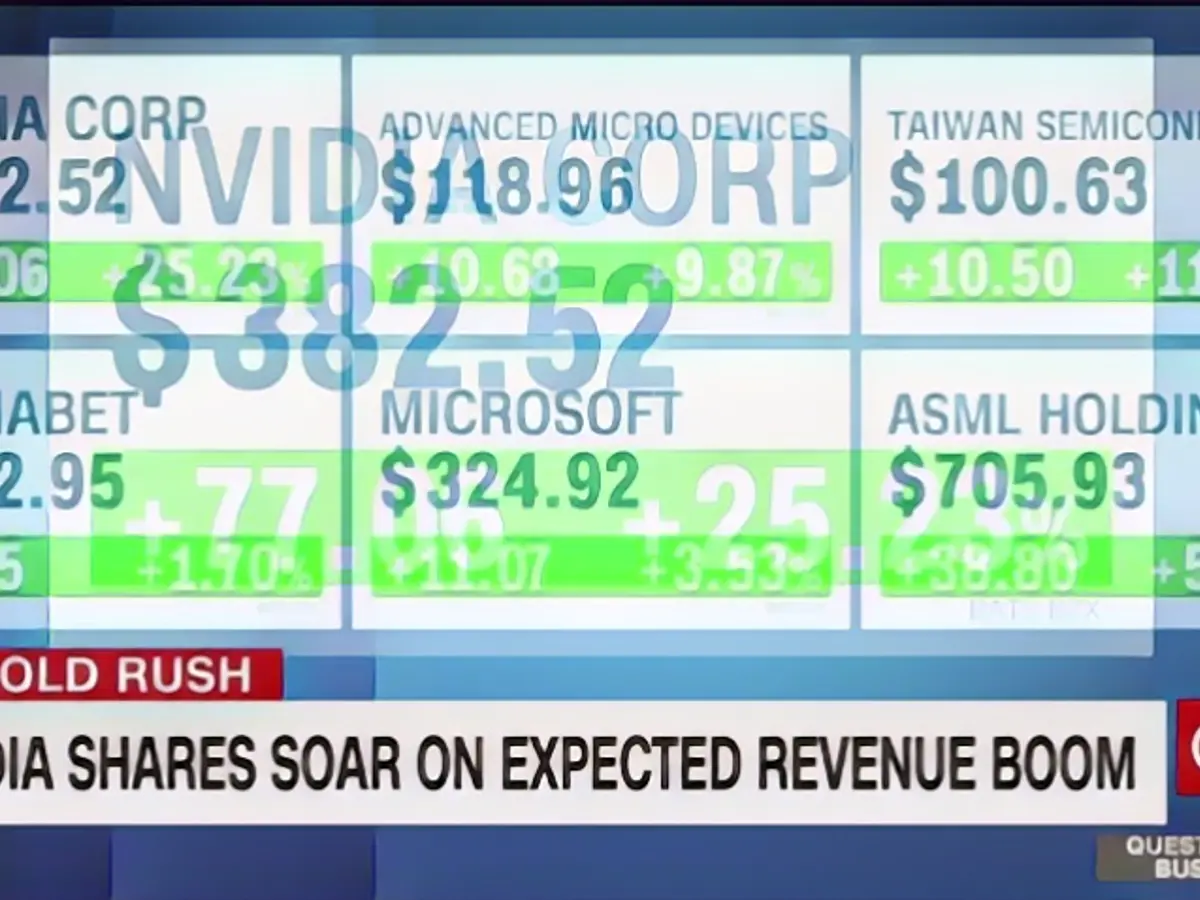Nvidia Adjusts Strategy to Comply with US Export Regulations for AI Chips in China
Nvidia, the Californian tech giant pioneering artificial intelligence (AI) chips, is collaborating closely with the US government to ensure its new offerings cater to recent export regulations. The company boasts a commanding 90% market share in China's burgeoning $7 billion AI chip market, but these restrictions pose challenges.
Analysts caution that US export limitations could open doors for Chinese competitors to seize market opportunities. Reports circulated last month that Nvidia (NVDA) has informed Chinese customers of a delay in unveiling its next-gen AI chip for China, due for release in Q1 2024.
CEO Jensen Huang confirmed Nvidia's active cooperation with the US authorities during a press conference in Singapore. He emphasized their shared goal of creating products that meet US export guidelines, while highlighting the intention to tightly collaborate with the government to introduce a fresh range of products catering to these regulations, which will encompass certain constraints.
Huang also acknowledged the necessity to consult with industry experts on this evolving scenario and noted Huawei as a robust competitor. With the US vowing severe financial penalties for engagement in sanctioned activities, Nvidia expressed concerns about a potential market shift and the consequence of these export prohibitions.
In the wake of the coronavirus outbreak in the US, Nvidia forecasted a substantial sales decline in China for Q4, although Huang cautioned that China's financial contribution to Nvidia typically accounts for about 20% of its total revenue. It's uncertain how this percentage might fluctuate when new US markets emerge, considering the export regulations.
Beyond these constraints, Huang highlighted that Nvidia is in dialogue with Singapore regarding a potential substantial investment, aiming to aid in its own large-scale language model project, Sealion. Singapore's Infocomm Media Development Authority (IMDA) announced plans last week to invest SGD 70 million in the development of the first large-scale language model for Southeast Asia.
Huang attributed Singapore's rich AI ecosystem and its standing as a prominent data hub for Asian markets as significant factors. As Nvidia tackles the challenges posed by US export regulations, it seems determined to adapt and innovate in a dynamic global technology landscape.
Additional Insights
The US export restrictions on advanced AI chips, particularly those centered on graphics processing units (GPUs), are impacting Nvidia's development and distribution of AI chips in China and its competition with Chinese companies. The three-tier system limiting GPU exports established by the Biden administration categorizes US allies as unrestricted, imposes a cap on CPU purchases in China and Russia, and enacts an outright ban in these regions [1][4][5].
As Nvidia, the market leader in data center GPUs, grapples with these restrictions, domestic chip developers in China are eager to displace Nvidia's dominance. Chinese AI start-ups such as DeepSeek are forging ahead by developing low-cost, high-performance AI models not reliant on Nvidia's CUDA ecosystem, while Chinese firms, like Infinigence AI, support leading chip developers in the mainland [2][3].
These export controls are instigating a competitive advantage for non-exempt countries, potentially driving up AI cost in these regions. Companies may opt to construct data centers in the US and undisputed countries to circumvent supply chain issues and restrictive chip usage [1][4].
The geopolitical dynamics underlying these export regulations are intended to safeguard US dominance in AI and national security, aiming to discourage AI proliferation in sanctioned regions such as China and Russia [4][5].
Sources: 1. 2. 3. 4. 5.








